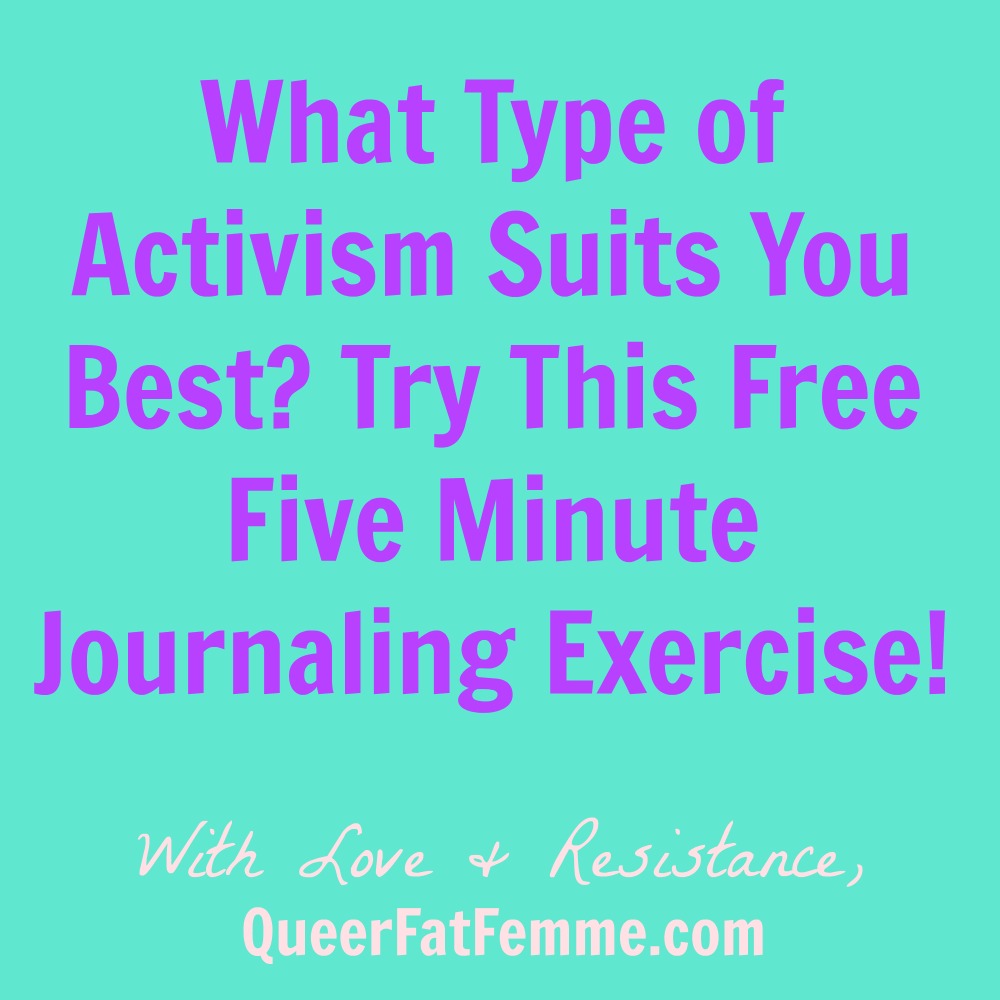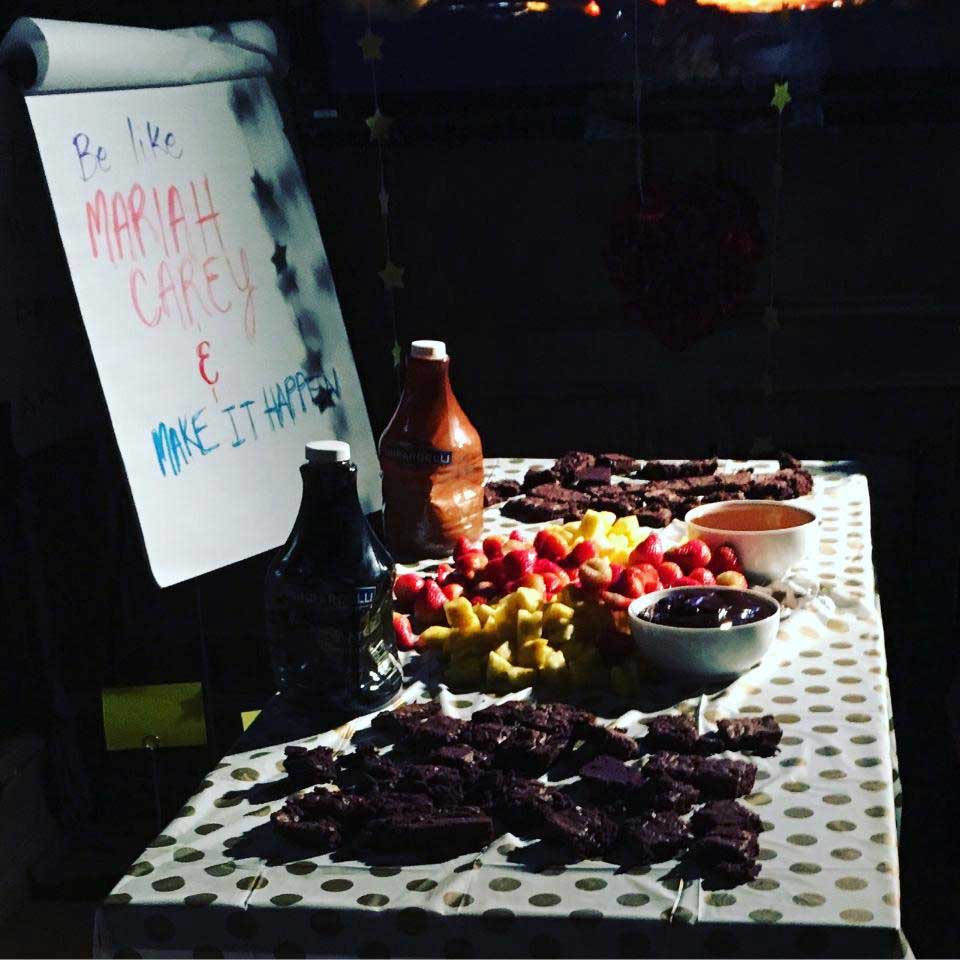
In light of the tremendous success of the Womens’ Marches throughout the country this weekend, a lot of people are feeling a strong call to action but don’t know where to start. I have a simple, five minute journaling exercise that can help!
 I think this event was so legendary that our kids are going to think of it like we think about Woodstock. When I was young I always asked people who were young adults around that time if they went to Woodstock. Everyone has a good story about it, even if they weren’t there.
I think this event was so legendary that our kids are going to think of it like we think about Woodstock. When I was young I always asked people who were young adults around that time if they went to Woodstock. Everyone has a good story about it, even if they weren’t there.
On Friday Dara, me and my friend Rick Sorkin implemented Love & Resistance, a Shabbat Dinner party centering activist uplift. We had a number of amazing presenters and Dara’s facilitation of ‘From Words to Action: Changing the Way we Organize with Love & Resistance’ was a hit. (She’s a professional facilitator and she’s fabulous.) I thought the content of her thirty minute facilitated discussion was a fabulous place for folks to use for self-reflection about their activism.
 The pics aren’t in from the event but here’s Dara at the Madonna Inn!
The pics aren’t in from the event but here’s Dara at the Madonna Inn!
Dara broke down five types of activists.
Protestor
If you are the first out on the picket line, you love to participate in boycotts, you are totally into calling your Senators and Congress folks, you might be a Protestor.
Protector
Unfortunately, Dara’s example for this type happened to her on the way to dinner. At the ATM in Silverlake, getting cash to pay for the restaurant, a man walking by screamed “Get all your money you Jew bitch.” For real. So if your inclination if you saw this happen was to roll up on Dara and find out if she’s okay and figure out how you can help her, you might be a Protector. Same if you are on a Southwest flight (where there are no assigned seats) and you sit next to a person of size to keep them from getting hassled by fatphobic seatmates. Or if you engage in other actions of one to one solidarity with folks who are vulnerable for a host of reasons… you might be a protector.
Bridge Builder
If you were invited to a meeting to talk to Drumpf supporters, would you do it? Do you want to figure out how to connect with people who don’t believe in the same things you do? Do you believe empathy and understanding can help us end racism, sexism, homophobia and the like? If so, you might be a Bridge Builder.
Healer
If your activism stems from a place of offering meditation, yoga, mental/emotional/spiritual/physical healthcare practices. If you gather people together to create healing, or practice self-care you might be a Healer.
Art Maker
If your activism is in the form of making art or music, if you hear “write for an SEO project working to make the internet more positive” and you immediately email them about it, this might be your form of activism.
 The stickers are what folks in the room identified as. You’ll note glitter stars are a theme throughout the event. Photo by Tristan Taormino.
The stickers are what folks in the room identified as. You’ll note glitter stars are a theme throughout the event. Photo by Tristan Taormino.
Dara then broke out groups of each type of activist (knowing that people fall into multiple categories.) I adapted the group work to journaling prompts here:
Consider the 5 types of activists. For this exercise, I want you to think about the type of activism you feel most drawn to right now. (Picture yourself doing each type of activism. Whichever one rings with the most joy, that’s what you feel drawn to.)
1. In your experience, what’s working about what activists in this area are doing?
2. What are the biggest challenges these activists are facing?
3. What could these activists do to improve the way they organize moving forward?
4. What’s one thing that you would be willing to do to improve the way you engage in activism?
If you find yourself currently engaged in a different type of activism, apply these questions to that type in a subsequent journaling session. If they are different, journal about why you’re active in an area that is not what you are drawn to!
 My piece was about Mariah Carey’s Lingerie Lifestyle as applied to social justice. Photo by Tristan Taormino, who helped us by co-hosting, donating a prize and inviting folks!
My piece was about Mariah Carey’s Lingerie Lifestyle as applied to social justice. Photo by Tristan Taormino, who helped us by co-hosting, donating a prize and inviting folks!
Doing this simple and powerful work has already impacted how I perceive people in my life and helped me understand better how to work in coalition with them. At the event I noticed when we talked about Bridge Building there were people in the room who actively roared against it. That’s totally okay if you have a strong aversion to one type versus another, it takes all kinds! In my opinion, Bridge Building is essential work to creating change, but so are all the other types of activism. Healing is also essential—and sometimes activism means powering down, healing yourself and staying alive.
I also extra loved that there were report backs from each group. Big takeaways I loved were Protectors saying to remember to stay in listening mode and let folks be autonomous when you’re working in solidarity. Protestors saying it’s been 60 years and we’re still protesting the same stuff. Bridge Builders saying to remember to see people as people, not as monoliths as their ideas. Art Makers saying they need to make sure they are using their art for activism and standing behind what they believe.
 Photo by Tristan Taormino.
Photo by Tristan Taormino.
Whether your activism is protesting or protecting, we need you more than ever so that we can collectively take that marching resistance energy and shift that arc towards justice under the weight of our boots/heels/wheels/loafers/sneakers/sensible lesbian sandals!
Our event was made possible with a grant from the Charles and Lynn Schusterman Family Foundation. We asked our guests in lieu of tickets to donate to Project Q, a fabulous non-profit in Los Angeles that serves LGBTQ homeless youth. If this resource is valuable to you, consider a donation!
